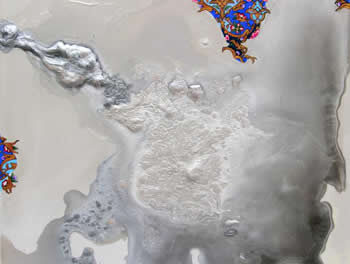Manbites Dog Theater opened its early-summer romp, The Age of Arousal, to a house full of “odd women” and the men who are not afraid of them. A recent work by Canadian playwright Linda Griffiths, The Age of Arousal is set in 1880s England and is based on an actual Victorian novel by George Gissing (1857-1903). Although it is set in the time when the typewriter was new and the path to women’s liberation seemed to lie through the secretarial school, it is essentially a modern reconsideration of questions that have engaged and plagued women at least since the first woman grasped a pen.
Is biology destiny? If so, what does this mean in practical terms? And more importantly, how does the individual cope with the conflicting demands of destiny and free will? If the biological imperative is to reproduce, to ensure the future for the human race, and the spiritual imperative is towards ensuring the freedom of the moment for the individual, is there any way to cope, other than swilling another glass of gin?
The Victorian era remains a powerful time to consider these questions, and not just because the condom became widely available during this period, allowing for the possibility of women skipping the worry of conception when choosing sex with men for the fun of it. There was this pesky little problem of there not being enough men to go around to maintain the economic model of husband taking care of wife and family. What if the biological imperative overwhelmed common sense — how could a woman and her child live? Was it necessary to sacrifice her autonomy to do so? Could she be “odd” — free, independent, mentally whole, and not in the poorhouse or on the streets? And what if a woman didn’t even want a man? Many writers in the Victorian era and beyond have explored these themes. A few random ones that come to mind include Kate Chopin (for a chilling take on “live free or die,” see her “The Story of an Hour”); Radclyffe Hall, whose novel The Well of Loneliness limned the difficult world of “inverts;” Virginia Woolf (Orlando) and Colette (especially in The Pure and the Impure).
The paragraph above points up the one real problem of The Age of Arousal: at times, it is remarkably like a lecture in Women’s Studies 101. Every time the script gets a little pedagogic, however, Griffiths redeems herself with lines ringing with sly self-awareness, such as the priceless “in the house of New Women there are always lots of pamphlets.” (Oh, too true.) These are delivered with panache and without excess irony by a wonderful cast under the direction of Kevin Ewert. Ewert has emphasized the play’s modernity by interjecting brash contemporary music during the scene changes, a technique that works very well to keep the currency of the play’s issues in the mental forefront.* He is aided in this by the whole production team. Special note must be made of Kristin Grieneisen’s smart costuming and painter Geraud Staton’s backdrop, a funny take-off on Manet’s Déjeuner sur l’Herbe, which Staton has placed in a forest of sexual forms. Ultimately, though, the play works because it has a real story — real people doing real things — that is adequate to support and embrace all its big ideas and concepts.
We have become blissfully expectant of fine acting at Manbites Dog, and once again our expectations are rewarded. It is not possible to speak of the “star” or even of a lead actor in an ensemble like this, but I will say that Jane Hallstrom, a veteran of Triangle theaters, makes a knock-out debut on the Manbites stage. She plays Mary Barfoot, owner of the secretarial school, with such relish that one can hardly wait for her next line. She explores the difficulties of equality in intimate relationships (ah, sex and money!) with her assistant and lover Rhoda Nunn, played by Nicole Quenelle, returning to Manbites after a considerable hiatus. Quenelle does a good job with Rhoda, the most complex of the women. She is the most ideological and defensive, and the most filled with longing — and the most baffled by the array of choices and dead-ends through which she must navigate her foxy self.
The play’s only man, Mary’s brother, the debonair and slightly caddish Everard, who wants in his heart to be a New Man among New Women, is delicately portrayed by Jay O’Berski. It is a treat to see O’Berski in a role not saturated in black and darker shades of black — and he’s dazzling in his spats. Even more dazzling in her spats is the marvelous Dana Marks as Virginia Madden, who leaves her unhappy skirted life and her gin bottle behind after a trip to Berlin, from which she returns sober, loose-limbed, and resplendent in menswear. As always, Marks’ physical characterization is as impressive as her vocalizations. As her sisters, who embody different aspects of Woman, Kristin Elliott and Lenore Field both shine. Nobody fully answers the apparently eternal “Woman Question,” but, between laughs, they all ask it very well indeed.
*I sat house left front row on opening night, and the music was painfully loud. House center and right generally are not so hard on the ears.
The Age of Arousal continues through June 13th. See our theatre calendar for details.











